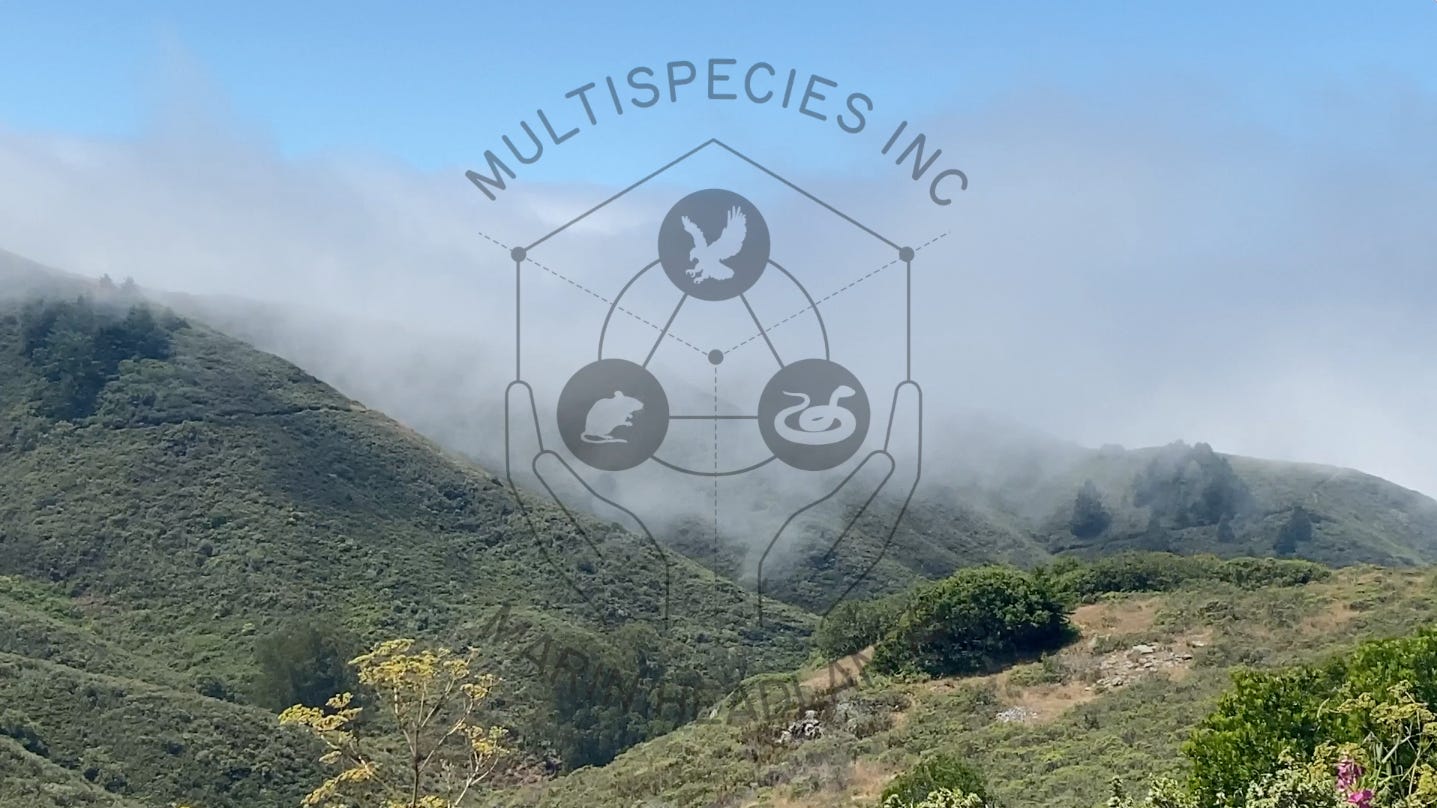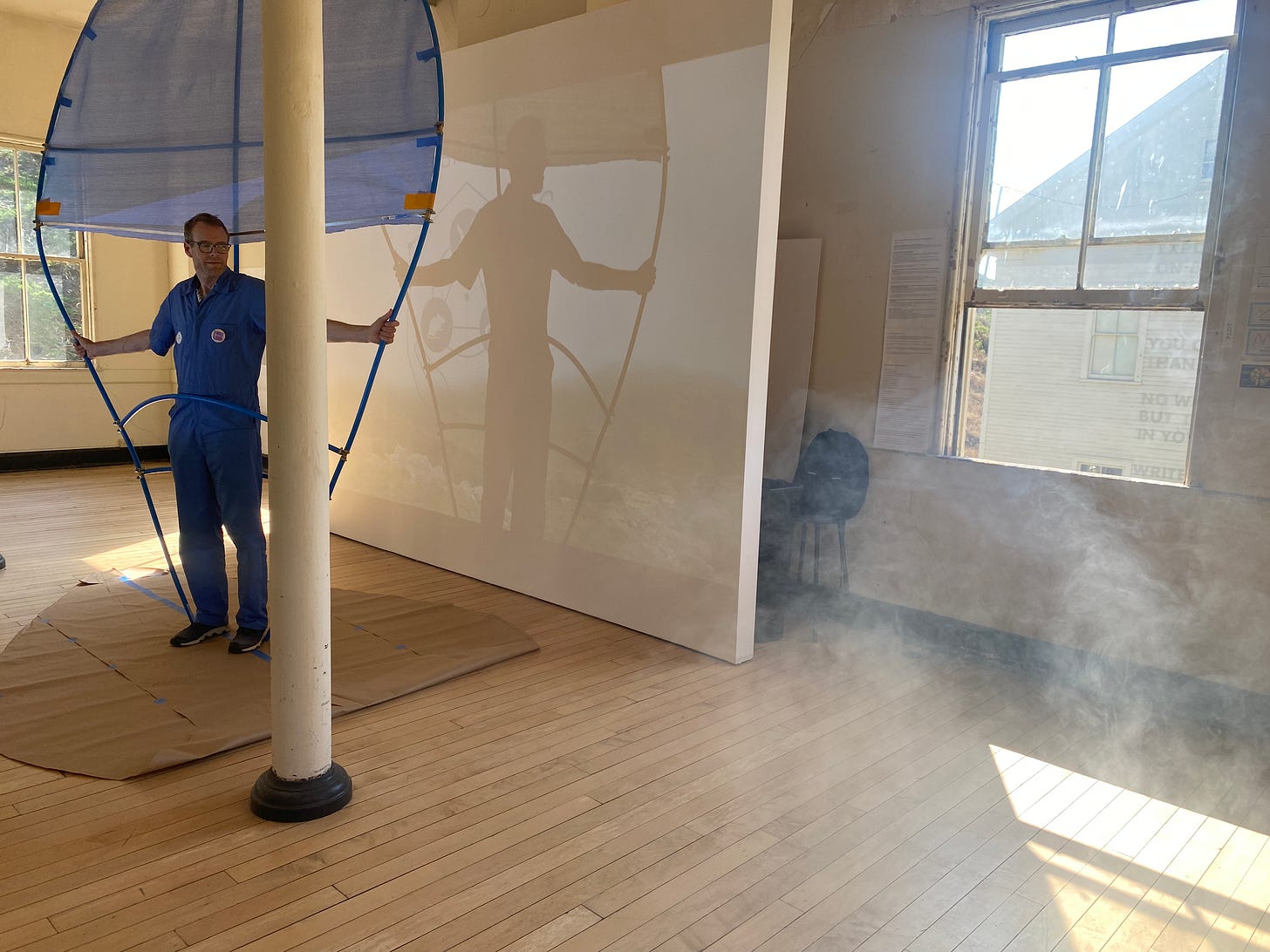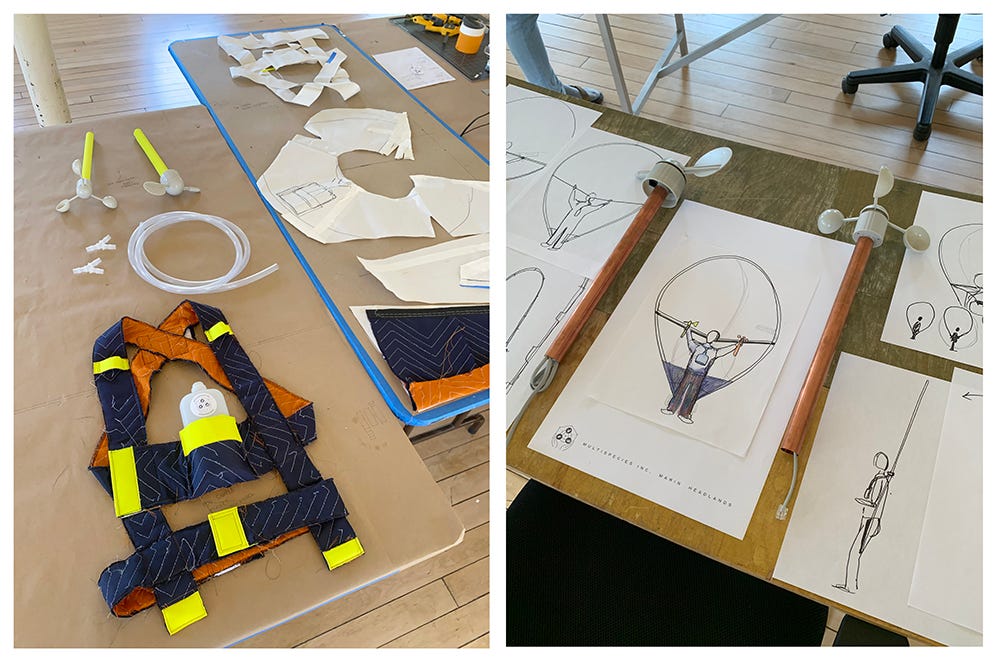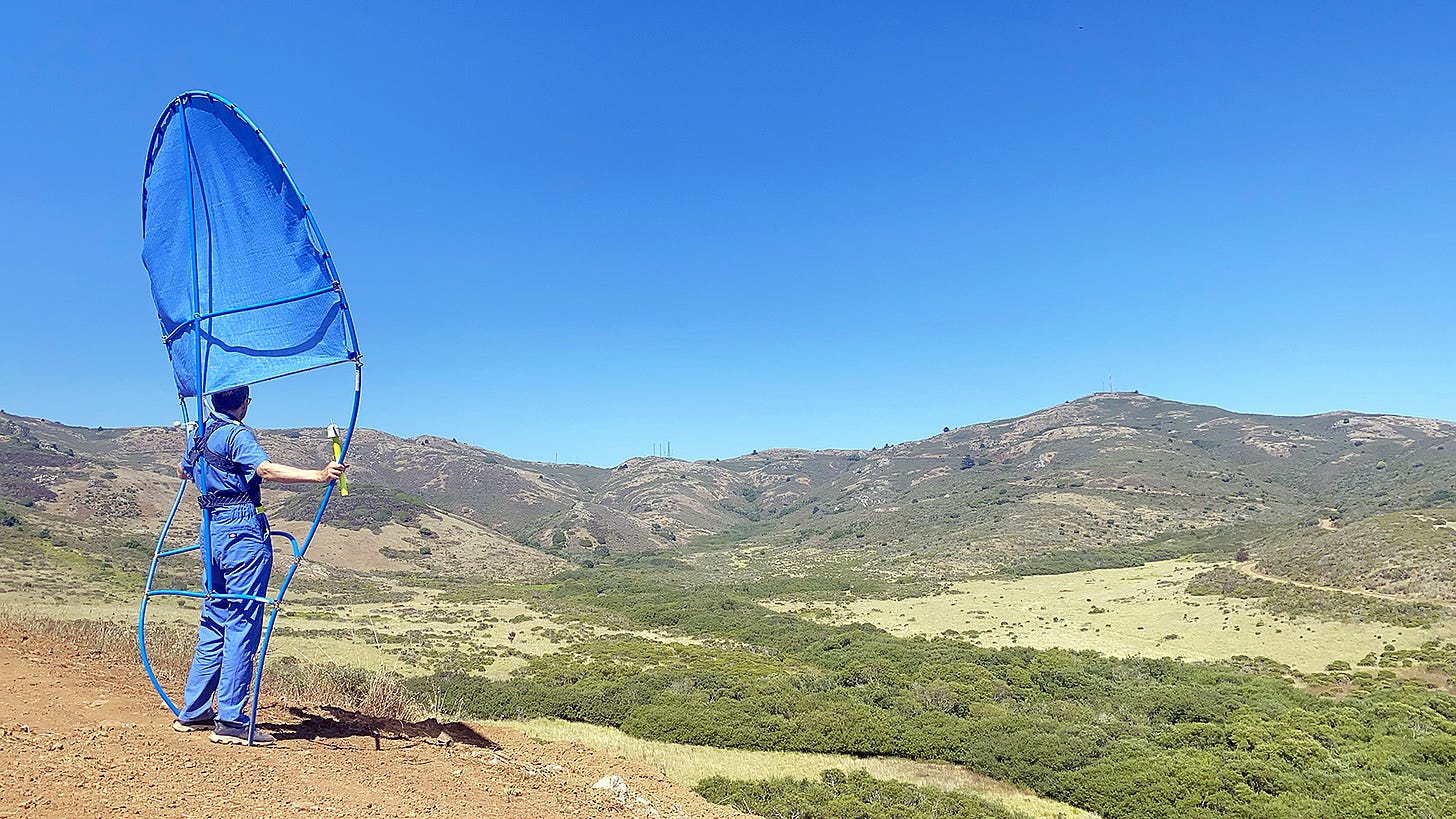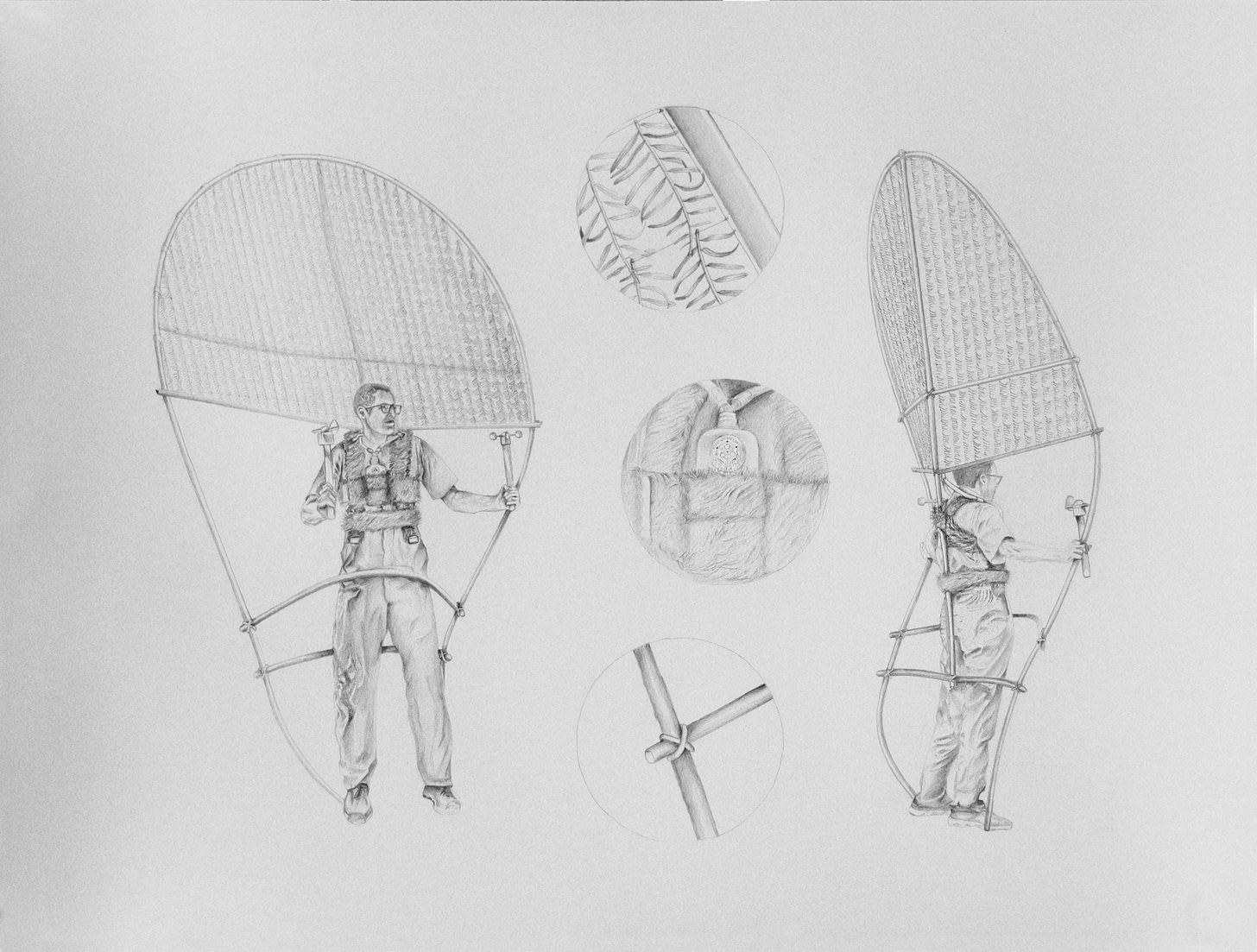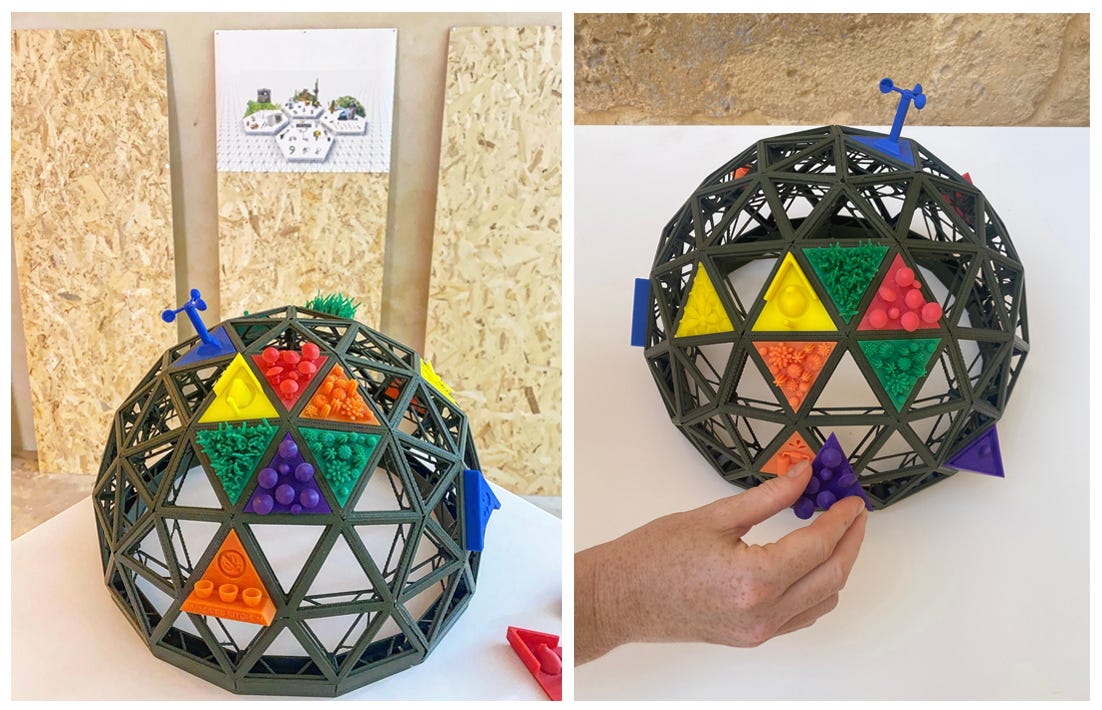Welcome to the latest Parsons & Charlesworth Studio Visit in which we provide a glimpse behind-the-scenes of our creative process and share snapshots from our speculative design and design fiction projects. This posts covers what we’ve been up to since the summer.
From mid-July to the end of August we were artists-in-residence at the Headlands Center for the Arts in Marin County, California. It was a truly incredible experience and an opportunity to meet some very inspiring and talented people. Besides making new work for our Multispecies Inc. climate fiction project, we spent the majority of our time exploring and learning about the incredible local landscape, the disused military infrastructure, and meeting other species, including the amazing old growth redwoods at Muir Woods National Monument. It was exactly what we needed after a very busy summer in which we concluded our time as NEW INC members with an exhibition at Pier 17 in Lower East Manhattan and a presentation for DEMO23 in New York in July that you can watch here.
Before traveling to Headlands, Compound Yellow, a non-profit experimental art space in Chicago hosted an outpost of Multispecies Inc. focusing on citizen science activities. After our return from California we had the opportunity to travel to Italy to install our work in an exhibition in Apuglia.
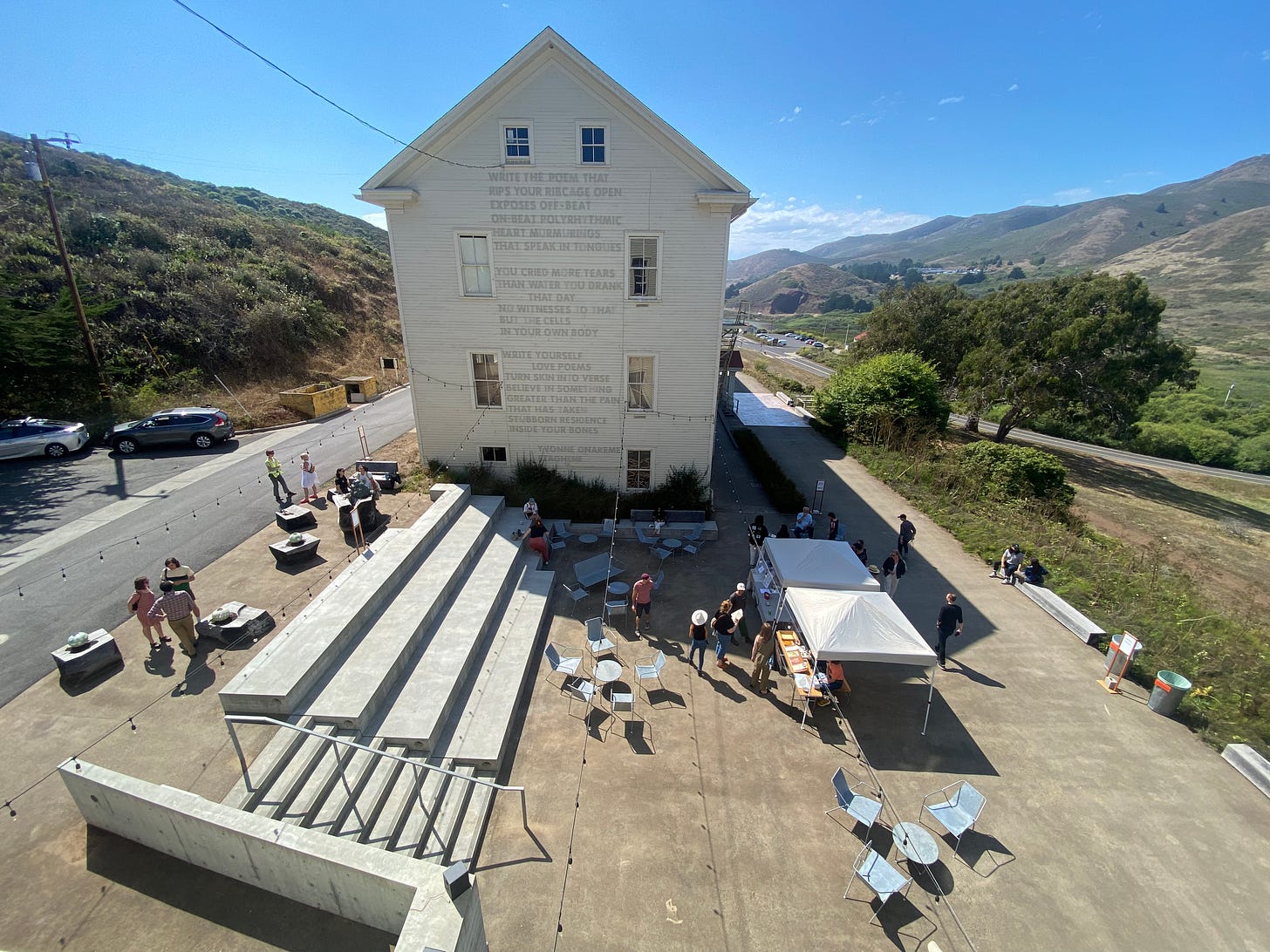
Headlands Artists Residency
Headlands offered us their project space - a very large, bright, open-plan room - as our studio for the duration of our residency, with the caveat that it had to remain open to the public five days a week. To give visitors an insight into the world of Multispecies Inc., we set the space up as a mini exhibition with some of our previous outputs, such as the digital collages and short story texts shared in our last substack. Most of the space, however, was used to show our work-in progress, imagining how this group of ecologists would go about managing the Marin Headlands biome, analyzing its species, and making interventions to counter climate-change related impacts.
Acting as de-facto members of the group, we had to learn about these impacts through our research, as well as immersing ourselves in the landscape directly through hikes and a visit to the Marine Mammal Center - a rescue and rehabilitation center for injured marine mammals.
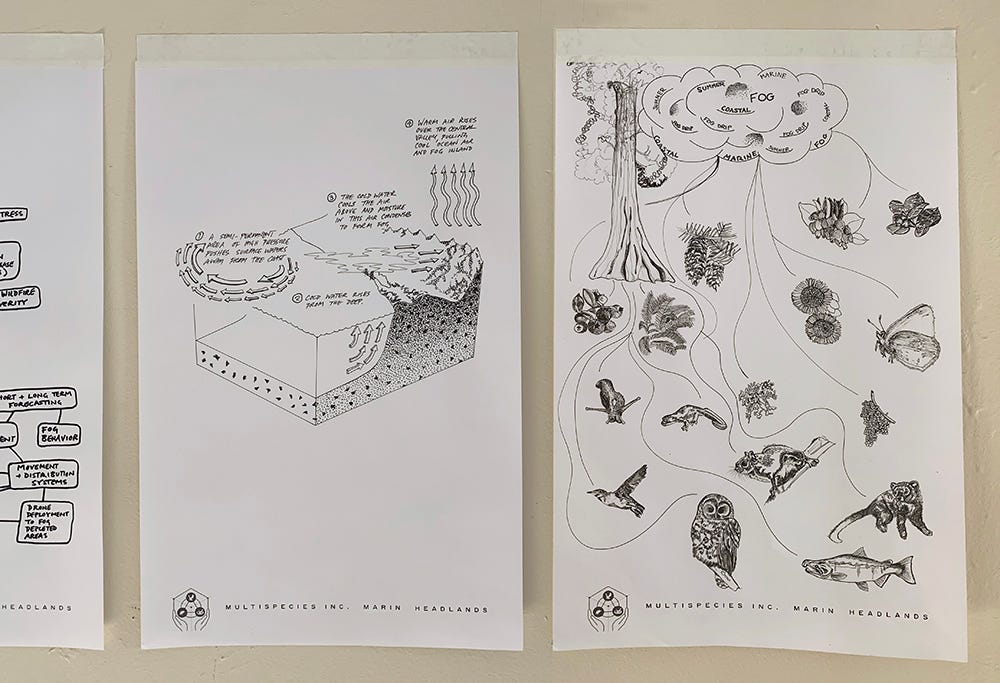
Diminishing Fog
One of the most inspirational interviews we carried out was with Mia Monroe, a park ranger at Muir Wood for over 40 years, and the Marin Community Liaison for the National Park Service. As well as being something of a local celebrity, Mia is a wealth of knowledge about the giant redwoods and the ecosystem they support. Redwoods “drink” fog and Mia shared the concerning news that scientists have discovered that the overall amount of fog in the San Francisco Bay area has diminished by one third since the 1950s. The fog is made by the gyrating weather system off the coast drawing cold water up from the depths and condensing it as it meets warmer air. One possible explanation for the diminishing fog is that warmer oceans created by anthropogenic climate change is shortening the fog season. However, fog is an illusive subject to study and scientists seem reluctant to link the diminishing fog to one specific cause. The unpredictability of the fog was evident every day at Headlands, enveloping us one day and disappearing completely the next.
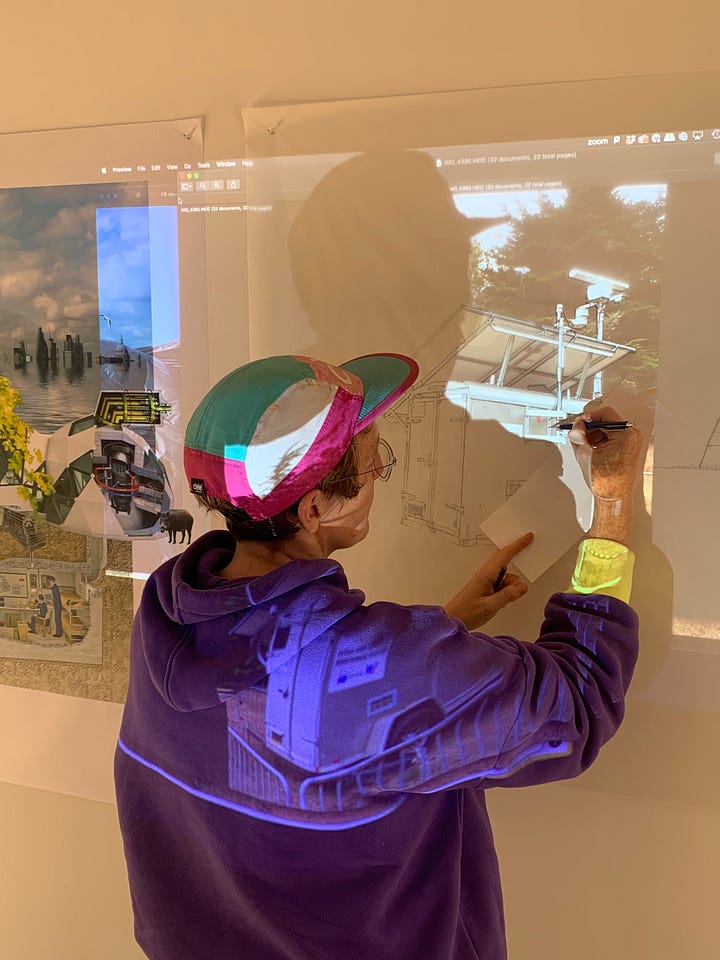

This fact that the fog was diminishing stayed with us and formed the cornerstone of our design speculations. What could Multispecies Inc. do to mitigate against diminishing fog? How would the redwoods survive if they no longer had fog water to nourish them? Could fog water be captured and transported from areas where it was not being used?
The Bay Model
Sharing our hypothesizing with friends, they told us about the Bay Model, a working model of the Bay Area watershed, designed in the 50s to test a proposal to dam San Francisco’s Central Valley to create a giant reservoir. Though the plan was scrapped the model was used until the early 2000s when it was replaced with computer models. Now a tourist attraction, it is the size of two football fields and is the precursor to the kind of AI biome modeling our fictional group of ecologists would be engaged in.
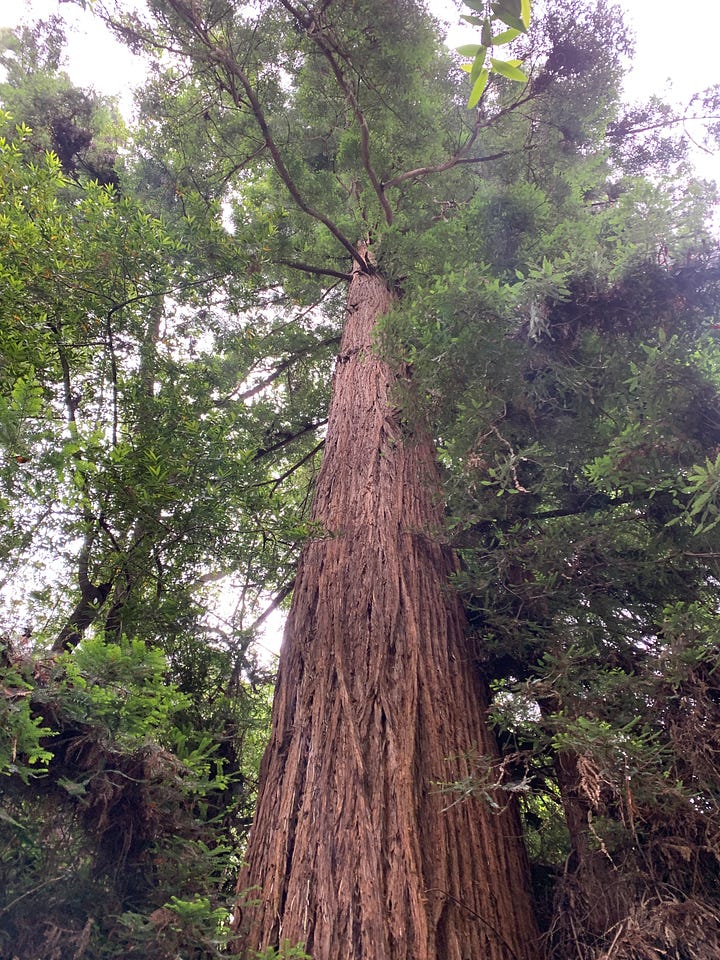
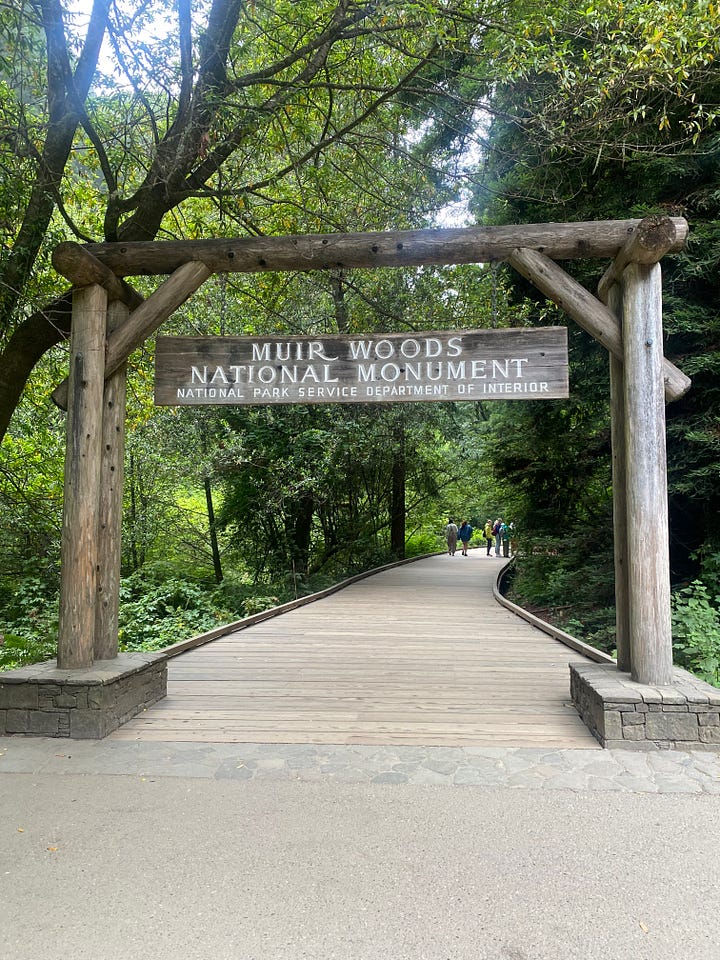
In the weeks that followed, we interviewed writer, journalist and author of Citizen Scientist: Searching for Heroes and Hope in the Age of Extinction Mary Ellen Hannibal. In our wide ranging discussion, Mary Ellen told us about a project with Stanford scientists about the potential reintroduction of elk on Stanford lands.
Drawing Styles
One of the pleasures of a residency like Headlands is the ability to reflect on your process and experiment with new techniques. We took the opportunity to think carefully about the drawing styles we use to communicate our ideas, examining examples of work from the many artists and designers whose drawings we admire, from Lucy and Jorge Orta, Ant Farm - whose archive we were able to visit at BAMPFA in Berkley - to Atelier van Lieshout, Francis Hallé and many others.
This led to several experiments with ink sketches illustrated with watercolor, pencil drawings inspired by patent drawings and Jess’s phenology drawings depicting species seen on our nature walks.
Open House and the Nomadic Fog Collector
Spurred on by an upcoming Open House event in which all Headlands Studios including our own would be open to the public, we decided to manifest our latest speculations in object form. Considering the potential future need to capture fog and redistribute it, we imagined an army of Multispecies Inc. members equipped with portable fog collectors, crowding the hillsides around Headlands. The fog collector is not a new typology but it is usually static. We designed and made a portable, wearable fog collector and demonstrated it during the Open House before taking it out onto the local Miwok trail. As soon as it was ready to be tested however, the fog disappeared!
Design for the Unthinkable World
Two years ago we were asked to respond to an essay, Design for the Unthinkable World, by its authors Craig Bremner, Giovanni Innella and Paul Rodgers. What grew into a multi-part research project, culminated this September in an exhibition, titled after the essay, which opened at KORA a contemporary arts center in Castrignano de’ Greci in Apulia in the far south-east of Italy. In the exhibition we presented further outputs from Multispecies Inc. alongside contributions from an international group of participants including Ani Liu, mischer'traxler, Kyoko Hashimoto, SulSolSal and José Rodrigo de la O Campos.
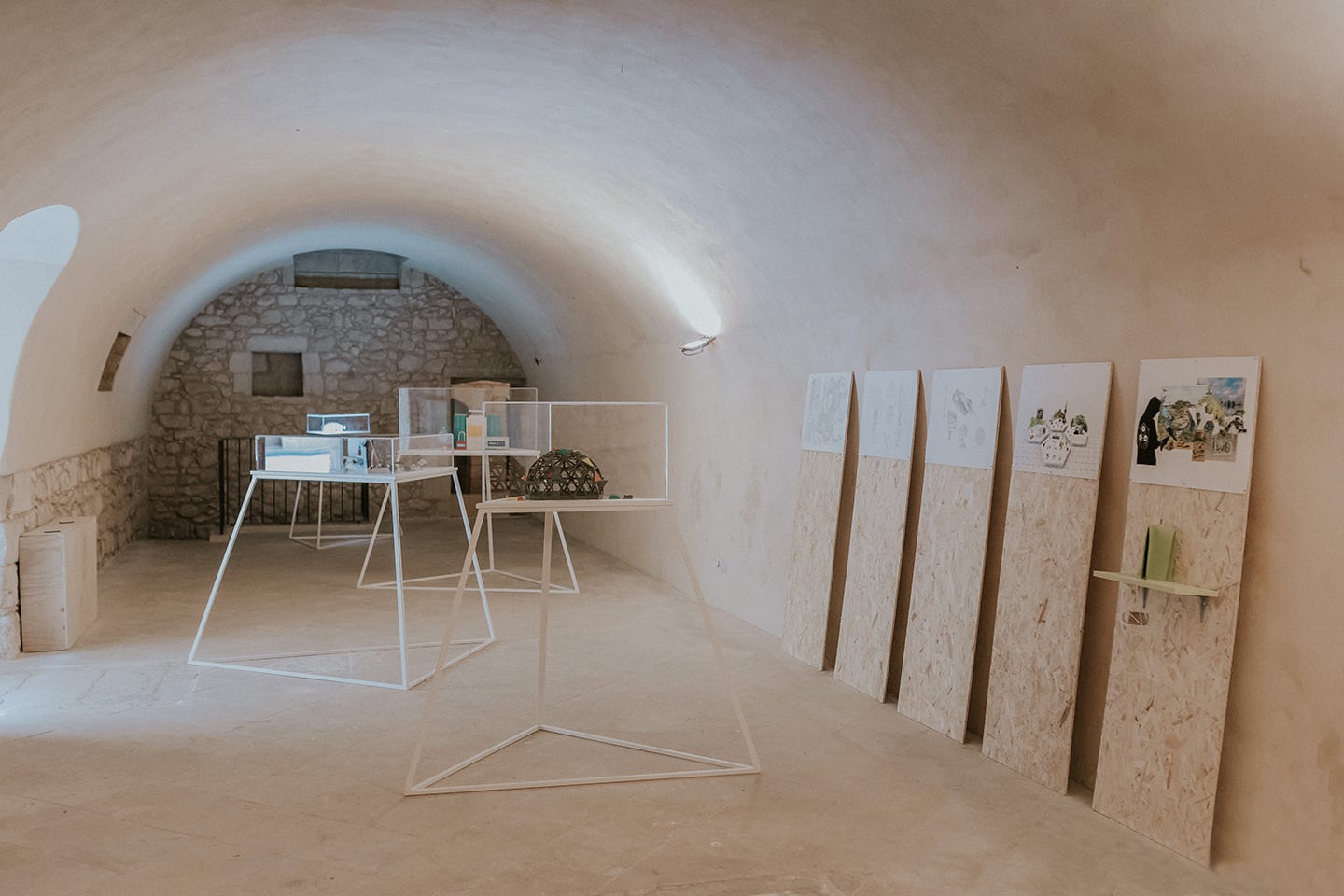
Drawings from Headlands
Amidst the backdrop of diminishing biodiversity and the looming specter of climate change, our connections with the environment and non-human species can seem so enigmatic that they challenge our capacity to depict them. In the face of this, we became fascinated with the artistic strategy of the tableaux in which scenes of life are depicted by arranging figures for picturesque or dramatic effect. We started a series of new pencil drawings depicting scenes from our ongoing climate fiction Multispecies Inc. Our tableaux capture interactions among individuals, non-human life forms, objects and systems, as a means to speculate on the potential redefinition of interspecies relations. The first three drawings shown at Kora are The Algae Kin-Gatherer, The Nomadic Fog Collector and The Redwoods Fog Distributor.
The book of stories shared in our last post describes Multispecies Inc. as a group of ecologists fostering multispecies cohabitation by managing ecosystems, gathering data and intervening to adjust for scarcity or overabundance. Through this work a new typology of object emerges - the kin-gatherer - an object with the sole purpose of providing visceral feedback on the lifeworld of another species. In June we presented the first of these kin-gatherer objects, designed for convening with algae. The Algae Kin-Gatherer consists of a raft and accompanying accessories that allows its user to better understand algae by floating face-down on a body of water, attracting, collecting and viewing algae, feeding them with exhaled carbon dioxide, and breathing the oxygen they produce. The drawing shows the object in use.
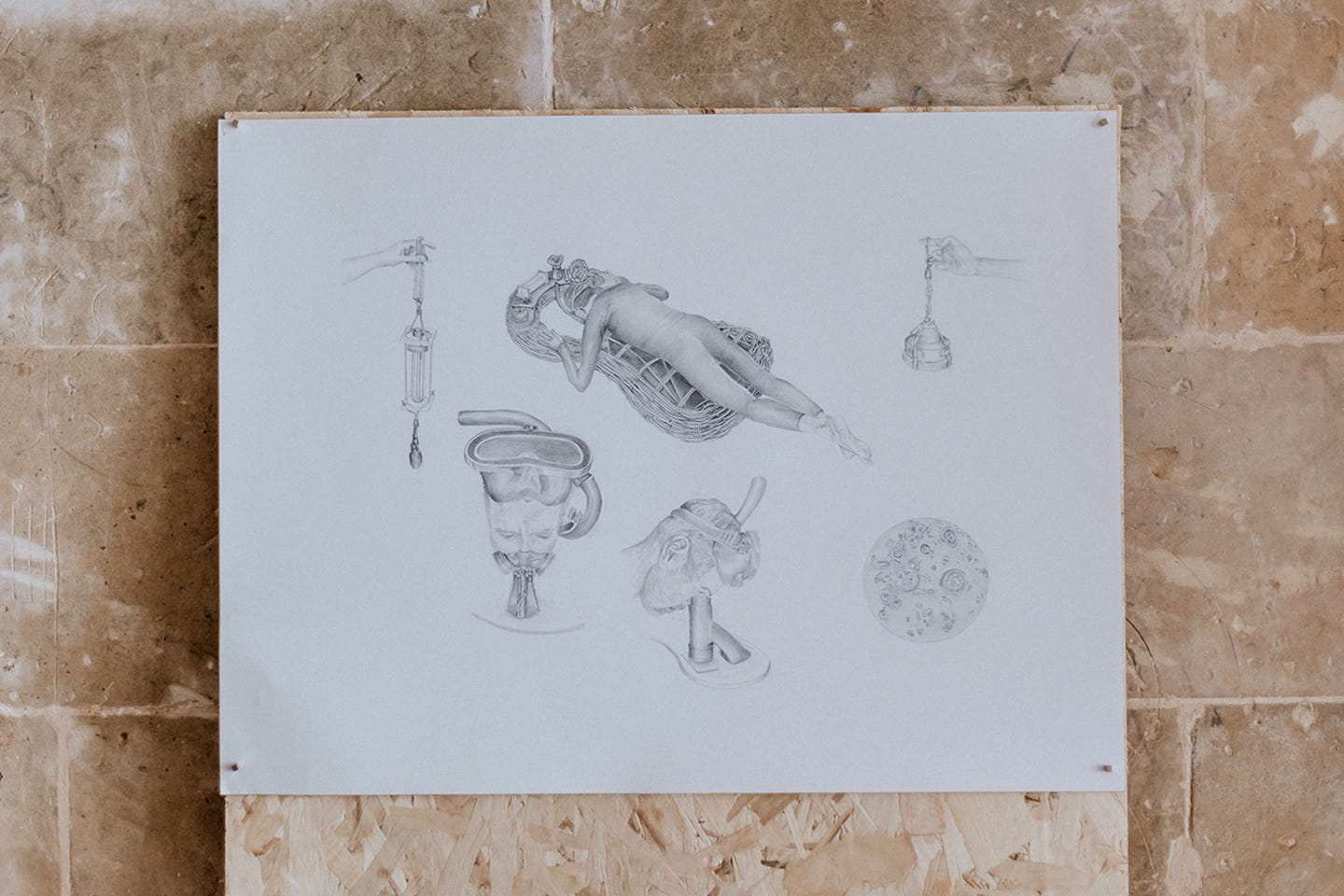
Developing from our speculations at Headlands, The Nomadic Fog Collector drawing shows the wearable portable fog collection device we prototyped, with a couple of important differences. Where the prototype used plastic mesh to capture the fog, the drawing depicts a surface made entirely from thousands of redwood leaves and a harness made from a kind of animal fur.
Accompanying the fog distributor is a tableau showing how the fog might be distributed within the redwood forest, and the species that would benefit. The drawing is inspired by themes of environmental interconnectedness, sustainability, and the delicate balance of ecosystems. It portrays a scene where a Multispecies Inc. weather station carefully observes the humidity levels in the forest and distributes a tank of collected fog water via a network of hoses and misters. The drawing attempts to convey the reliance of many species on the health of the redwoods and the life-sustaining fog drip from their leaves. Moreover, the image invites viewers to imagine the journey of the fog water collected by the nomadic fog collectors.
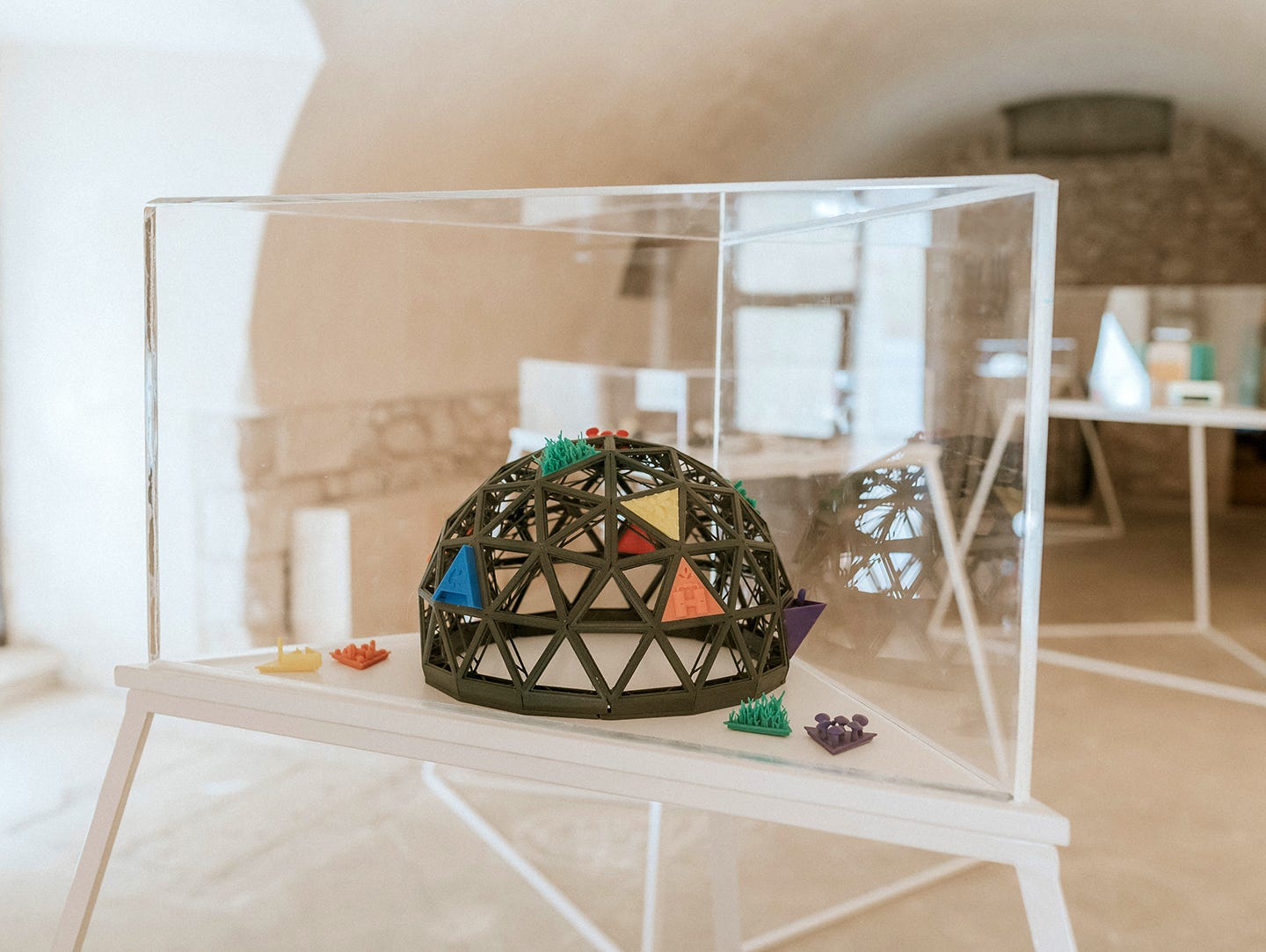
Multispecies Living Unit Educational Toy
Accompanying the drawings, we presented the Multispecies Living Unit (MLU) educational toy. The educational toy proposes how members of Multispecies Inc. might communicate their worldview to the younger generation. By providing a tool for learning and understanding our complex relationships with the environment, this geodesic dome home - inspired by the work of innovative startup Geoship - represents multispecies cohabitation through removable triangular modules, each with a unique functionality related to different species. Each module infers a symbiotic, caring, relationship between humans and non-humans, and the breaching of the traditional nature-culture divide.
Inspired by the PhD work of designer Michelle Westerlaken, we created modules that speculate on the idea of ‘doing ethics in practice’ - an act of nurturing and caring without a specific outcome. Questions of empathy and ethics are raised through the imagined interactions implied by such a living structure, where each module implies a relationship of care between humans and non-humans.
Modules include:
-Bird houses: Creating homes for our avian friends.
-Beehive: Witness the wonders of pollination.
-Bat house: Providing shelter for these nocturnal creatures.
-Wormery: Turning kitchen scraps into valuable compost.
-Mushroom Fruiting Module: Discover the wonders of mycology.
-Plant and prairie grass module: Exploring the beauty and importance of greenery.
-Weather station: Monitoring our environment for a deeper understanding.
-Microbial fuel cell: Harnessing the power of bacteria for energy.
-Invasive Species Kitchen: utilizing invasive species as a sustainable food source.
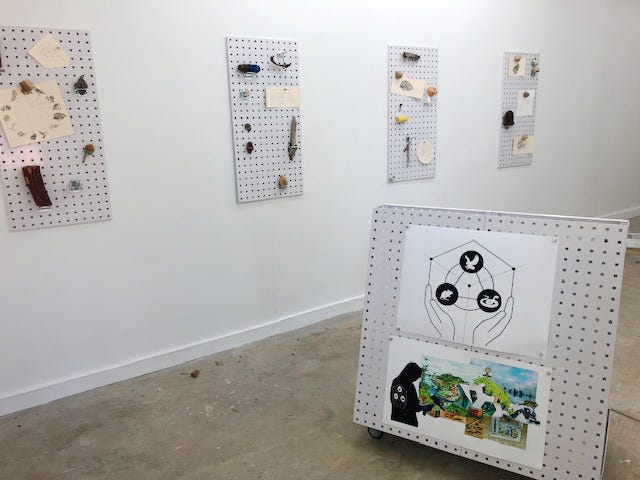
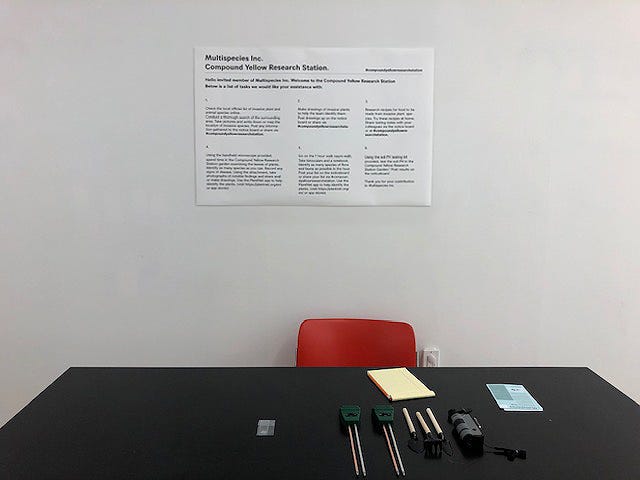
Compound Yellow Research Station
From June 10th to July 15th, Chicago based experimental project space Compound Yellow operated as a drop-in research station for Multispecies Inc. Audience members were invited to dive into the world of Multispecies Inc. through a set of stories, view artifacts and diagrams that illustrated the group’s work and participate in citizen science activities that model the work of Multispecies Inc. members. We developed a set of tasks which invited visitors to identify plants using AI apps, mapping invasive species, examine them under the microscope, conduct soil tests and go on nature walks to document species.
Catch you all soon again for more Parsons & Charlesworth Studio Visit fun times!
Jessica Charlesworth & Tim Parsons




